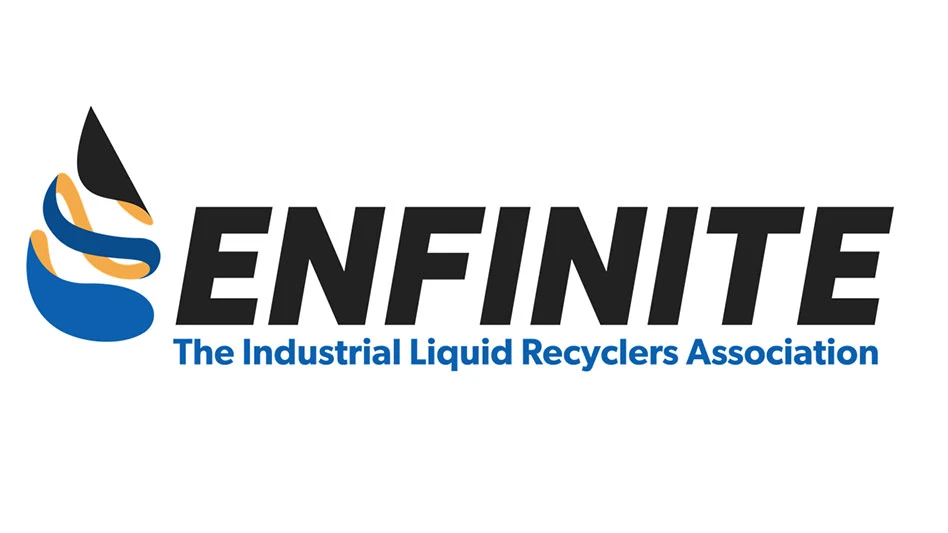As our keynote speaker (Don Reynolds of 21st Century Forecasting) told us, 3 billion new capitalists have been added to the world during the last 15 years. These new capitalists are from populations that historically were primarily socialist and moved into the capitalistic world, primarily China and India.
These new capitalists are really the essence of the paper demand and paper recovery story because as these populations modernize they are moving in a direction of larger consumption of natural resources and recyclable commodities.
THE DEVELOPING SCENE. European nations via the European Union are developing some of the most dramatic recycling programs in the world, leading to significant new recovery. I think the U.K. is the primary example. If you go back and look at the U.K. 10, 12, 14 years ago, recovery was not very strong. But, today, paper recovery in the U.K. is pretty strong.
The 27 nations of the E.U. are more integrated today than they have been at any time since the Roman Empire. And the E.U. nations have more wealth, more trade and more people than the U.S.
European demand for recovered paper is still expanding because Eastern Europe is almost a mini-China, if you will, from the perspective of modernization, and Europe will continue to expand its use and need of recovered paper in coming years. One of the most dramatic things that I think will happen in Europe is that the E.U. is giving serious consideration to banning the landfilling of recyclable materials prior to 2020. The population of the 27 E.U. nations today, not counting additional nations and general population expansion, is 500 million persons. So, if this E.U. directive is enacted, it will be extremely significant because it will essentially close the landfill option for recyclables to 10 percent of the world’s population.
What is referred to as the "E"-Generation, the younger generation of Europe, is demanding environmental quality and progressive recycling services. So when you look at nations like Switzerland, Sweden, Austria, Germany, you see the highest recovery per capita of paper in the world.
Napoleon said, "Let China sleep, for when she awakens, she will shake the world." One-fifth of all humanity lives in China. While Napoleon didn’t know much about recycling, I would contend that China is shaking the recycling world and that it will be the single most important and dramatic nation as it relates to recycling in the world outside of North America. In my opinion, China is like a new sun in the solar system in relation to recycling.
CHINA EXERTS HER INFLUENCE. Today, China does $850 billion in business with other nations. China has become the world’s largest producer of consumer electronics. American consumers and Chinese producers have led a global economic boom. By 2011, 25 percent of all the imported products purchased in the United States will be from China. China is pulling resources from the entire world and will continue to do so because it doesn’t have enough resources to take care of its needs in relation to the products it wants to produce. China and the rest of Asia are going to continue to provide major end-use recycling opportunities to the entire world for paper and other recyclable commodities.
Our keynote speaker predicted that within about 15 years, China would surpass the United States in GDP (gross domestic product). The Goldman Sachs prediction is 2039. I think the truth is probably somewhere between the 15-year prediction and the 2039 prediction, keeping in mind that this is a population that has moved 300 million people out of poverty in the last decade.
China is the world’s largest consumer of steel, copper and cement. China is developing major world influence by becoming everyone’s largest customer. It is the second largest consumer of oil in the world; it has the second largest highway system in the world. In addition to that existing highway system, China is going to build a highway system bigger than the U.S. interstate system. China is becoming the world’s largest market for everything. Asia’s paper and forest product sales for 2006 were $54 billion as compared to $127 billion for the forest products industry in the United States.
I believe you can tell a lot about nations in relation to their retail shopping. China has had significant growth in retail shopping. Four hundred large malls have been constructed in the last seven years. And when I say "large," there are malls in China that are 2.5 times the size of the Pentagon. There are malls in China that have 30,000 shops in them. If you spend one minute in each of those shops, it would take you two months to get through some of these malls. You have retail coming online that, in my opinion, is unlike what the world has seen before. Meaning that now, China is commanding significant market share not only worldwide, but also domestically as it focuses more on domestic opportunities. And the "C"-Generation—the Chuppie Generation, as they are known in China—appear to be up to the consumption task.
If you look at China, compared to U.S. history, everything is happening at once. You have, in terms of comparables, the raw capitalism of the industrial 1800s in the United States, with its quasi-capitalistic system. You have the speculative financial mania of the 1920s playing out today. You have the rural-to-urban migration in terms of jobs. You have the emergence of the firsts: the first automobile, the first home, the first college educations, the first family vacations, and it looks like middle-class America in the 1950s.
In the process of all this, China will consume ever-growing volumes of paper: paper to package products for its citizens, paper to package products for the world and paper for magazines, books and other everyday publications. China publishes approximately 97 million daily newspapers, while in the United States we produce 53 million papers.
INDIA’S DEMANDS. Now I want to talk about India. Throughout the last 15 years, India has become the second fastest growing economy in the world after China, averaging 6 percent annual growth. India already has a middle-class population of 300 million persons, approximately the size of the United States, and it has become the world’s preferred place to invest. India also is growing through the shopping center expansion, though a little bit behind China’s expansion.
India is a country with virtually no natural resources, so it is going to be heavily dependent on the world for e-scrap, for plastic, for recovered paper, for scrap metals. Because it has limited natural resources, it is doing what Thomas Friedman refers to in his latest book, The World Is Flat, as "mining the people’s minds." He says, "India is like a factory, churning out and exporting some of the most gifted engineers and computer science and software talent in the world." India will clearly participate in shaping the outcomes on critical global issues of the 21st century.
"The Zippies Are Here," the Indian magazine Outlook, reported recently. The Zippies are the 555 million strong urban and suburban people in India between the ages 15 and 25, known as the "Z"-Generation. The Z-Generation wants the good life, they want high standards of living, they want no sweatshops in their country, they want brand name products, they want the latest in electronics and they want to trade in their scooters for automobiles. The good life includes paper and packaging for those electronic products. Additionally, India publishes approximately 78 million daily newspapers. Therefore, in the coming years, India will build state-of-the-art mills, consume a lot more paper and need recovered paper from North America and the rest of the world.
If you will, the Zippies of India, the Chuppies of China, the Yuppies, X-ters, Nexters, You-Tubers, MySpace Generation and the E-Generation of Europe and their counterparts in other nations and other consumers are now going to be responsible for the largest ever and most significant consumption of natural resources, recyclable commodities and products in the history of the world. These populations and their governments will define the New World Order. What this means is that globally, recycling of all commodities is going to be extremely important from both a resource and an energy management perspective.
THE PAPER PICTURE. I’d like to talk about paper consumption, now that we better understand the New World Order. What you find, paper as a worldwide commodity is extremely important. In 2000, the world consumed 300 million tons of paper products. By the end of this decade, the world will consume 400 million tons of paper products. By 2015, the world will consume 450 million tons of paper. Obviously, globally we have tremendous growth for paper products. That is all about the modernization that I’ve spoken about. Now, if we break this down to per capita consumption, what we find is those areas of the world modernizing—China, Eastern Europe, Russia, Asia, Latin America to a certain degree—are consuming more paper, with less paper consumption in Canada and the United States. North American paper consumption is decreasing primarily because of e-communications and the opportunities that are afforded to the younger generation, primarily, which is not making use of newspapers like historic populations of their age.
Let’s switch to paper recovery. Paper recovery in the United States now stands at 53 percent of the total manufactured each year. That is up from 28 percent in 1990. While that is good news, the growth is slowing in recent years because we are finding it more and more difficult to bring new volumes in to the recovery cycle. If you take a look at mill consumption for the United States, you’ll notice that we peaked in 1999 at roughly 37 million tons. We are using approximately 35 million tons in recovered paper in U.S. mills, and with the exception of the new tissue mills slated for the next couple of years, we don’t see tremendous growth over the long term.
Where the North American recovered paper industry has grown in the last decade is export. In 1997 we were exporting 16 percent of all the recovered paper collected in the United States; today, 32 percent is exported. Obviously that is going to grow.
China’s primary suppliers are Japan, Western Europe and the United States. On average, the U.S. is responsible for 45 percent of China’s recovered paper; Europe, 30 percent; Japan, 15 percent; and other locations, like Australia, 10 percent. In the U.S., we exported 17.5 million short tons last year, 10 million tons of which when to China.
I am of the opinion, in a back of the envelope sort of way, that there are 33 million tons of paper still left to recover in this country. I’ll tell you how I got there. We know we are recovering 53 million tons. Nine million is what we know cannot be recovered because it’s been made into tissue paper or products like ceiling tiles. I estimate that 5 million tons of paper cannot be recycled because it is contaminated. And I would contend that there are somewhere between 30 million and 35 million tons of paper still out on the streets available to be recovered and worth approximately $2.5 billion dollars.
According to data from E.U. Consulting and Moore & Associates, in the 1990s and early 2000s, the world’s paper mills needed another annual increase of 6 million tons of recovered paper. That was a significant number at the time, and most of that volume was met by the thousands of new residential recycling programs that came online during the ’90s that engaged millions of Americans as active participants in recycling.
If we look at 2004 to 2012, the world’s mills need about 10 million tons of recovered paper annually. That means that in the next five years, the world needs as much additional recovered paper as we recover in the United States. So, it is a very significant opportunity for our industry.
I would note quickly that I think there is more material on the urban tree as it relates to recovered paper. And I’d like to note magazine recovery in the United States is not as significant as it could be. The industry has been working on that through the Re-Mix program. Additionally, we know there are un-recovered tons in residential single-family homes, small office complexes and businesses and multi-family living units. In my opinion, this industry has an exciting opportunity to significantly increase recovery of paper in North America.
Pete Grogan is recycling market development manager for Weyerhaeuser Inc. and can be reached at pete.grogan@weyerhaeuser.com.

Explore the August 2007 Issue
Check out more from this issue and find your next story to read.
Latest from Recycling Today
- Greenville, Mississippi, launches aluminum can recycling program
- Cotton Lives On kicks off 2025 recycling activities
- Georgia-Pacific names president of corrugated business
- Sev.en Global Investments completes acquisitions of Celsa Steel UK, Celsa Nordic
- Wisconsin Aluminum Foundry is a finalist for US manufacturing leadership award
- MetalX announces leadership appointments
- Sofidel agrees to purchase Royal Paper assets
- US Plastics Pact report charts expansion path for recycled content in packaging





